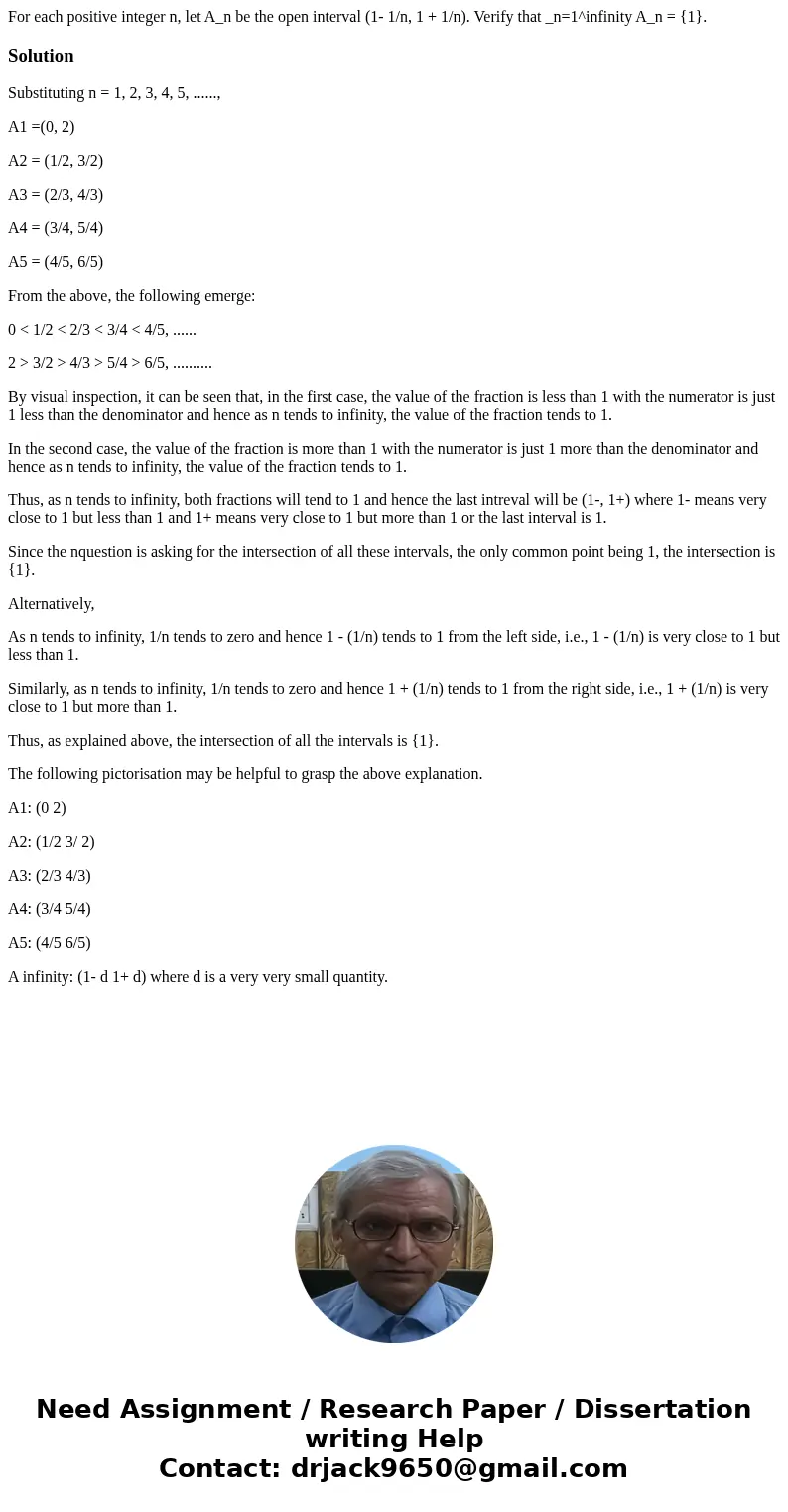For each positive integer n let An be the open interval 1 1n
Solution
Substituting n = 1, 2, 3, 4, 5, ......,
A1 =(0, 2)
A2 = (1/2, 3/2)
A3 = (2/3, 4/3)
A4 = (3/4, 5/4)
A5 = (4/5, 6/5)
From the above, the following emerge:
0 < 1/2 < 2/3 < 3/4 < 4/5, ......
2 > 3/2 > 4/3 > 5/4 > 6/5, ..........
By visual inspection, it can be seen that, in the first case, the value of the fraction is less than 1 with the numerator is just 1 less than the denominator and hence as n tends to infinity, the value of the fraction tends to 1.
In the second case, the value of the fraction is more than 1 with the numerator is just 1 more than the denominator and hence as n tends to infinity, the value of the fraction tends to 1.
Thus, as n tends to infinity, both fractions will tend to 1 and hence the last intreval will be (1-, 1+) where 1- means very close to 1 but less than 1 and 1+ means very close to 1 but more than 1 or the last interval is 1.
Since the nquestion is asking for the intersection of all these intervals, the only common point being 1, the intersection is {1}.
Alternatively,
As n tends to infinity, 1/n tends to zero and hence 1 - (1/n) tends to 1 from the left side, i.e., 1 - (1/n) is very close to 1 but less than 1.
Similarly, as n tends to infinity, 1/n tends to zero and hence 1 + (1/n) tends to 1 from the right side, i.e., 1 + (1/n) is very close to 1 but more than 1.
Thus, as explained above, the intersection of all the intervals is {1}.
The following pictorisation may be helpful to grasp the above explanation.
A1: (0 2)
A2: (1/2 3/ 2)
A3: (2/3 4/3)
A4: (3/4 5/4)
A5: (4/5 6/5)
A infinity: (1- d 1+ d) where d is a very very small quantity.

 Homework Sourse
Homework Sourse